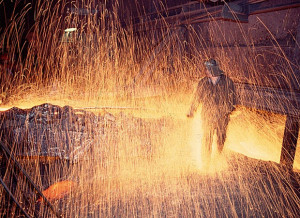
Oil prices have been going up and down in recent weeks, but they are still nowhere near the coveted $80 per barrel which would allow Russia to balance its budget. The Kremlin’s active efforts at getting other oil-producing countries to agree to an oil output freeze have not yet brought any results. Both the ruble and Russian oil companies’ stock prices remain low. The Russian economy’s pathological dependence on oil is a long-established diagnosis that can only be treated with diversification. Putin’s aggressive empire subject to international sanctions for Russia’s invasion of Ukraine finds it hard to expand industrial production and to attract foreign investment and technologies. Even without the sanctions, hardly anyone would want to invest in a country mired in corruption and lawlessness. However, beside the proverbial oil and gas industry, Russia has other traditional sources of export revenues that were in a steady demand for many years.
Thus, according to the Russian Ministry of Industry and Trade, both in 2008 and today, Russia ranked first in aluminum and nickel exports. The Russian-Swiss RUSAL, controlled by Oleg Deripaska, is the world’s largest aluminum producer. RUSAL owns 28 percent of Norilsk Nickel, one of the world’s major producers of nickel and a number of other non-ferrous metals. Both Norilsk Nickel and RUSAL are ranked among Russia’s top ten exporting companies, with all the other companies on the list being oil and gas producers.
As of 2014, the aggregate export volume of RUSAL and Norilsk Nickel amounted to almost $13 billion. In 2014, $497,8 billion worth of goods were exported from Russia with oil and gas accounting for 69.5 percent, or $346 billion. The export volume of two aforementioned companies accounted for almost 8.5 percent of the country’s exports unrelated to oil and gas industry. The percentage value might not look very impressive. However, just for comparison, in 2014, light industry goods – and this includes almost all of the clothes and footwear sold in the country – were imported into Russia in the same amount of money.
Despite favorable domestic conditions (the weakening of the ruble results in a decrease in production costs for exporting companies), fortune does not favor producers of non-ferrous metals on the international market. Aluminum prices are steadily decreasing. Nickel prices are dropping even faster. Aluminum production is extremely power-consuming, and since electricity does not come cheap, RUSAL is currently selling its aluminum at a price close to and sometimes even lower than its production costs, even despite the weak ruble. Besides, RUSAL’s volume of production is decreasing, while China, for example, that strives to end its dependence on raw materials, increases its output by actively implementing new technologies.
The nickel industry demonstrates the same situation. The world market is overstocked with it which affects its price that has already dropped lower than most production costs.
Since the wellbeing of monotowns’ residents, including in such big cities as Norilsk, depends on their jobs at factories manufacturing non-ferrous metals, the lack of profit from selling aluminum and nickel is sure to affect the population.
 If, as experts predict, world prices on oil, nickel and other raw materials do not go back to their high levels in the coming years, the Russian economy that is deeply stuck in a raw material dependency will face challenging times. Both the country’s government and its population should have realized by now that in the modern world the abundance of natural resources does not guarantee a country’s wellbeing but on the contrary means that every decrease in world prices leads to budget deficits and higher unemployment and poverty rates. One of the reasons the Soviet Union collapsed was that in the 1980s, the energy prices had dropped significantly compared to the previous decade. Time will tell if the remnants of the Soviet empire survives the current decline in global raw materials prices.
If, as experts predict, world prices on oil, nickel and other raw materials do not go back to their high levels in the coming years, the Russian economy that is deeply stuck in a raw material dependency will face challenging times. Both the country’s government and its population should have realized by now that in the modern world the abundance of natural resources does not guarantee a country’s wellbeing but on the contrary means that every decrease in world prices leads to budget deficits and higher unemployment and poverty rates. One of the reasons the Soviet Union collapsed was that in the 1980s, the energy prices had dropped significantly compared to the previous decade. Time will tell if the remnants of the Soviet empire survives the current decline in global raw materials prices.





